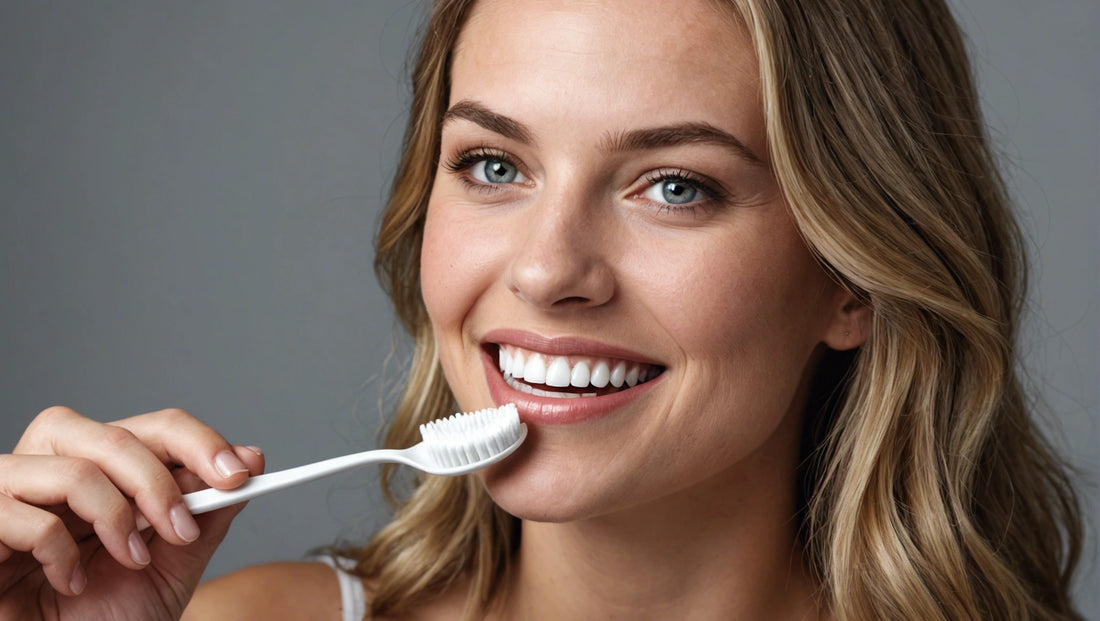Introduction
Fluoride has been a staple in toothpaste for decades, hailed for its cavity-fighting properties. However, growing concerns about its potential health risks have led many to seek fluoride-free alternatives. This article explores seven compelling reasons to avoid fluoride in toothpaste and introduces effective alternatives for maintaining oral health.
Reason 1: Potential Health Risks
Overview of Health Concerns Linked to Fluoride Exposure
Fluoride, while beneficial in small doses, can pose health risks when over-consumed. Studies have linked excessive fluoride intake to various health issues, including neurological and endocrine disorders.
Studies and Research on Fluoride Toxicity
Research published in The Lancet Neurology classifies fluoride as a neurotoxin, alongside substances like lead and arsenic. Excessive exposure has been associated with lower IQ scores in children and impaired cognitive development .
Reason 2: Dental Fluorosis
Explanation of Dental Fluorosis and Its Causes
Dental fluorosis occurs when young children consume too much fluoride during the years when their teeth are developing. This condition results in the discoloration and mottling of teeth, which can range from mild white spots to severe brown stains and surface pitting.
Impact on Dental Aesthetics and Health
Although primarily a cosmetic issue, severe cases of dental fluorosis can affect tooth structure and make teeth more susceptible to decay. The prevalence of dental fluorosis among children is rising, raising concerns about the widespread use of fluoride toothpaste.
Prevalence Among Children
A survey conducted by the Centers for Disease Control and Prevention (CDC) found that about 41% of adolescents aged 12-15 have some form of dental fluorosis, highlighting the need for alternative oral care products .
Reason 3: Thyroid Function
Connection Between Fluoride and Thyroid Health
Fluoride can interfere with thyroid function, particularly in individuals with iodine deficiency. The thyroid gland uses iodine to produce hormones that regulate metabolism, and excessive fluoride intake can disrupt this process.
Research Findings on Fluoride's Effect on Thyroid Function
A study in the Journal of Clinical Endocrinology & Metabolism found that high fluoride exposure is associated with an increased risk of hypothyroidism, a condition where the thyroid gland is underactive and unable to produce sufficient hormones .
Reason 4: Skeletal Fluorosis
Description of Skeletal Fluorosis and Its Symptoms
Skeletal fluorosis is a bone disease caused by excessive fluoride intake over many years. It leads to the hardening and thickening of bones, resulting in pain, stiffness, and limited joint mobility.
Long-Term Effects of High Fluoride Intake on Bones
Prolonged exposure to high levels of fluoride can cause severe joint and bone deformities. In advanced stages, skeletal fluorosis can resemble arthritis, making diagnosis challenging and often leading to misdiagnosis.
Reason 5: Environmental Impact
Fluoride Contamination in Water and Soil
Fluoride pollution can result from industrial processes and the widespread use of fluoride-containing products. This contamination affects water sources and soil, posing risks to both human health and the environment.
Ecological Concerns Related to Fluoride Usage
Fluoride can accumulate in plants and animals, disrupting ecosystems. Studies have shown that high fluoride levels can impair the growth and reproduction of aquatic life, highlighting the broader ecological implications of fluoride use .
Reason 6: Sensitivity and Allergic Reactions
Cases of Fluoride Sensitivity and Allergies
Some individuals experience sensitivity or allergic reactions to fluoride, manifesting as mouth sores, gastrointestinal issues, and skin rashes. Identifying and eliminating fluoride exposure can alleviate these symptoms.
Symptoms and Management of Fluoride Reactions
Fluoride sensitivity can cause discomfort and disrupt daily activities. Switching to fluoride-free toothpaste, such as ToothPow, can help manage and prevent these adverse reactions.
Reason 7: Availability of Effective Alternatives
Introduction to Fluoride-Free Toothpaste Options
Fluoride-free toothpastes offer effective alternatives for maintaining oral health without the risks associated with fluoride. These products often contain natural ingredients that provide similar benefits.
Efficacy of Natural Ingredients
Hydroxyapatite: This naturally occurring mineral makes up the majority of tooth enamel and bone. Studies have shown that nano-hydroxyapatite can effectively remineralize enamel and reduce sensitivity, making it a powerful alternative to fluoride .
Xylitol: A natural sugar alcohol found in many fruits and vegetables, xylitol helps reduce the risk of tooth decay by inhibiting the growth of harmful bacteria in the mouth. Research published in Caries Research supports xylitol's role in preventing cavities .
Herbal Extracts: Ingredients like neem, tea tree oil, and aloe vera have antimicrobial properties that can help maintain oral health. These natural extracts can reduce inflammation, fight bacteria, and promote gum health.

Alternatives to Fluoride in Toothpaste
Hydroxyapatite: Benefits and Research
Hydroxyapatite, particularly in its nano form, mimics the natural mineral composition of teeth, promoting remineralization and strengthening enamel. Research has shown that hydroxyapatite toothpaste can be as effective as fluoride in preventing cavities and restoring enamel .
Xylitol: How It Works and Benefits
Xylitol's ability to reduce oral bacteria and enhance saliva production makes it an excellent fluoride alternative. It not only helps prevent cavities but also promotes a balanced oral microbiome.
Herbal Extracts: Examples and Their Properties
Herbal extracts such as neem and tea tree oil offer antibacterial and anti-inflammatory benefits. These natural ingredients can help maintain healthy gums and reduce the risk of periodontal disease.
ToothPow Formula: Overview of Ingredients and Their Benefits
ToothPow toothpaste combines the benefits of hydroxyapatite, xylitol, and herbal extracts to provide a comprehensive, fluoride-free oral care solution. Its natural ingredients work together to strengthen enamel, reduce plaque, and promote overall oral health.
Conclusion
While fluoride has long been used to prevent cavities, concerns about its potential health risks and environmental impact have led many to seek alternatives. By understanding the reasons to avoid fluoride and exploring effective alternatives like hydroxyapatite, xylitol, and herbal extracts, you can make informed choices for your oral health. Consider switching to fluoride-free toothpaste like ToothPow to enjoy the benefits of natural ingredients without the associated risks.
For more tips and products to help maintain your oral health, visit the ToothPow website.

